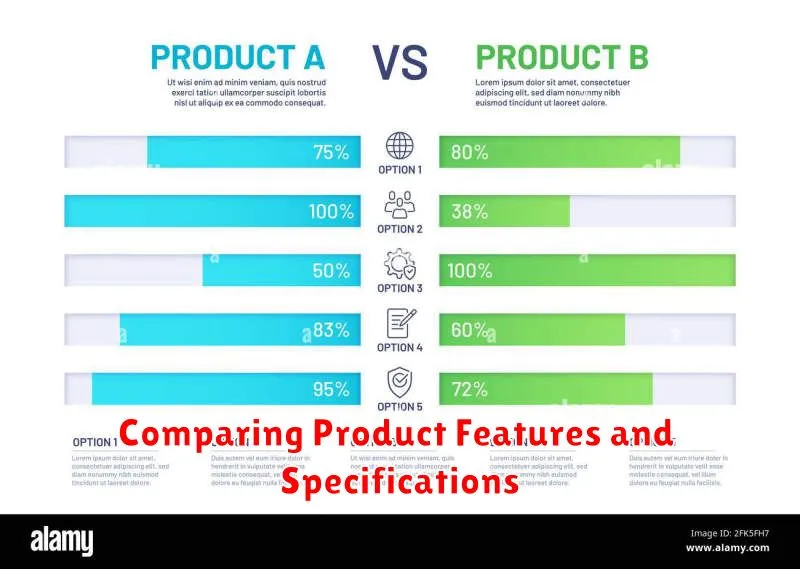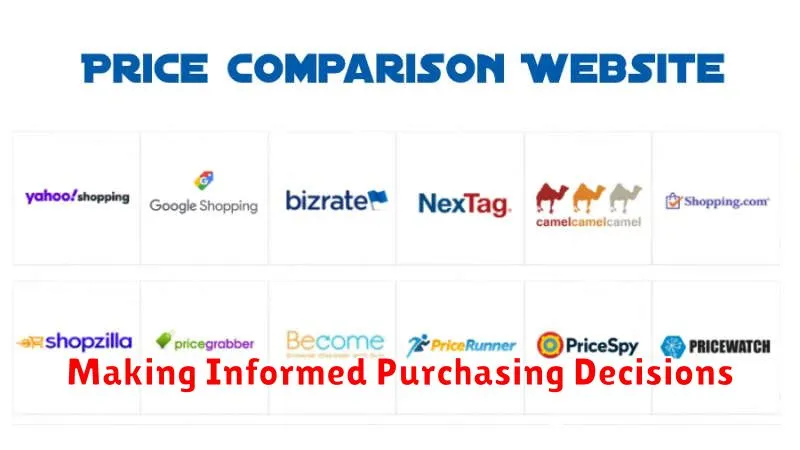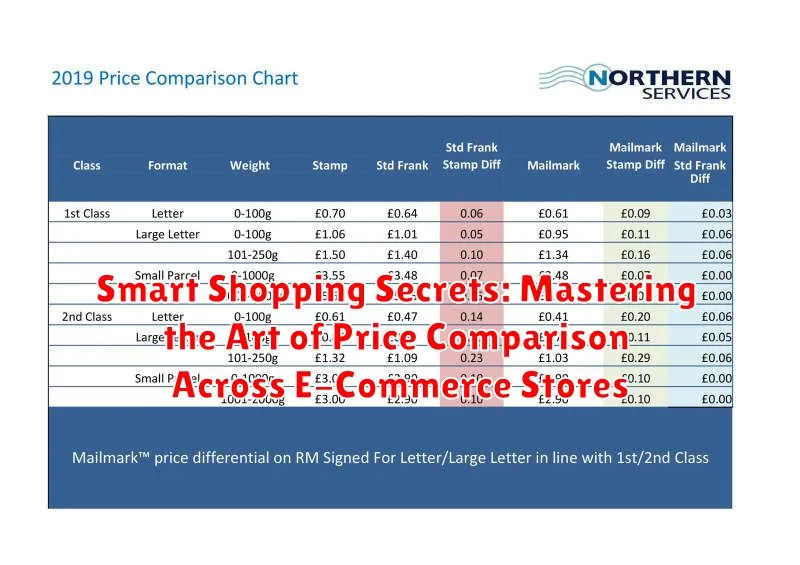In today’s dynamic e-commerce landscape, smart shopping has become essential for consumers seeking the best deals. Price comparison is a crucial aspect of this practice, enabling informed purchase decisions and significant savings. This article delves into the art of price comparison across e-commerce stores, equipping you with the smart shopping secrets to navigate the online marketplace effectively. Mastering these techniques will empower you to secure the most competitive prices on desired products, maximizing your purchasing power.
From utilizing price comparison websites and browser extensions to understanding pricing strategies and leveraging discount opportunities, this guide covers a range of practical tips and techniques. Learn how to efficiently compare prices across different e-commerce stores, identify potential price discrepancies, and make well-informed purchasing decisions. By implementing the smart shopping secrets outlined in this article, you can become a savvy online shopper and unlock significant savings on your purchases. Explore the world of price comparison and elevate your smart shopping game to a new level.
Understanding the Importance of Price Comparison
In today’s dynamic e-commerce landscape, price comparison has become an indispensable aspect of smart shopping. Comparing prices across different platforms empowers consumers to make informed purchasing decisions, ensuring they receive the best possible value for their money.
Price fluctuations are common in the online marketplace. By diligently comparing prices, you can avoid overpaying for products and potentially save a significant amount on your purchases. This is especially crucial for big-ticket items like electronics or appliances.
Beyond simply finding the lowest price, comparison shopping also helps identify potential price gouging or unfair pricing practices. This knowledge allows you to support ethical businesses that offer competitive and reasonable prices.
Price awareness fosters a sense of control over your spending. Understanding the price range for a desired product helps establish a reasonable budget and prevents impulsive buying decisions. This can lead to more mindful spending habits and greater financial stability.
Effective Tools and Techniques for Price Comparison
Price comparison websites are invaluable resources. These platforms aggregate product listings from numerous e-commerce stores, allowing you to quickly compare prices for identical items. Enter your desired product, and the website will generate a list of retailers offering that item, ranked by price.
Browser extensions can also streamline the price comparison process. These extensions automatically check prices across different retailers as you browse online. They often alert you if a lower price is available elsewhere, saving you the effort of manually checking multiple websites.
Utilize price tracking tools. These tools monitor the price of a specific product over time, notifying you of price drops. This can be particularly helpful for items with fluctuating prices, allowing you to purchase when the price is most favorable.
Don’t underestimate the power of coupons and discounts. Many retailers offer coupons or promotional codes that can significantly reduce the price of an item. Websites and browser extensions specializing in coupons can help you find these deals before making a purchase.
Identifying Reputable E-Commerce Stores
Before making a purchase, verifying the reputation of an e-commerce store is crucial. A reputable store offers a secure shopping experience and authentic products. Start by checking for secure website connections (HTTPS). Look for a padlock icon in the address bar.
Customer reviews are invaluable. Browse reviews on external websites and forums to gauge other shoppers’ experiences. Pay attention to comments about customer service, shipping speed, and product quality.
Investigate the store’s contact information. A legitimate business will provide clear contact details, including a physical address, email address, and phone number. This allows you to reach them with questions or concerns.
Look for trust seals or certifications from recognized organizations. These can indicate that the store adheres to specific security and business practices. However, remember to verify the legitimacy of these seals.
Finally, research the store’s return policy. Understanding the return process is important in case you need to return or exchange a product.
Comparing Product Features and Specifications

Beyond price, the core features and specifications of a product significantly influence its value. A seemingly lower price might be appealing, but ensure the product delivers the functionality you require. Scrutinize the product details across different e-commerce platforms. Pay close attention to variations in size, weight, color, materials, and technical capabilities.
For electronics, compare processors, RAM, storage, and screen resolution. If purchasing clothing, consider fabric composition, size charts, and washing instructions. For furniture, examine dimensions, materials, and assembly requirements. Create a checklist of essential features to facilitate a direct comparison across platforms. This ensures you aren’t swayed by a low price only to receive a product that doesn’t meet your needs.
Consider the specific features that matter most to you. Is battery life paramount? Is a particular software compatibility essential? Prioritize these key elements when comparing product specifications. A side-by-side comparison table can be highly effective in evaluating these crucial differences efficiently.
Factoring in Shipping Costs and Delivery Times
A seemingly great deal can quickly become less appealing once shipping costs and delivery times are considered. Shipping fees can significantly impact the final price, sometimes even exceeding the cost of the product itself, especially for smaller or lighter items.
Delivery times are equally crucial. While a lower price might be tempting, a lengthy delivery period might not be suitable if you need the item urgently. Consider the occasion, whether it’s a birthday gift or a necessary replacement, and choose a shipping option that aligns with your needs.
Free shipping offers can be attractive, but be aware of the potential trade-offs. Sometimes, retailers inflate the base price of the product to compensate for the cost of free shipping. Always compare the total cost, including shipping, with other retailers who might offer lower product prices but charge for shipping.
Look for shipping calculators on e-commerce sites. These tools allow you to input your location and receive estimates for shipping costs and delivery dates before checkout. This feature helps you make informed decisions and avoid surprises at the final stage of your purchase.
Spotting Hidden Fees and Charges
Hidden fees can significantly inflate the final cost of an item. Be vigilant in identifying these charges before finalizing your purchase.
Shipping costs are a common culprit. Carefully review the shipping charges, which can vary based on delivery speed, location, and package size. Look for free shipping thresholds and consider consolidating orders to minimize these costs.
Taxes are another crucial factor. While sales tax is usually clearly displayed, be aware of potential import duties or other regional taxes that may apply depending on your location and the origin of the product.
Some retailers may charge handling or processing fees. These fees are often disguised within the terms and conditions or only revealed at the final checkout stage. Scrutinize all details before confirming your purchase.
Membership or subscription fees can also contribute to hidden costs. While some retailers offer free trials or discounts for members, be sure to understand the terms and any recurring charges associated with these programs. Cancel any unwanted subscriptions promptly to avoid unexpected fees.
Utilizing Price Tracking Tools and Alerts
In the dynamic landscape of online retail, prices can fluctuate significantly. Leveraging price tracking tools and alerts allows you to monitor desired products and receive notifications when prices drop. This proactive approach eliminates the need for constant manual checking.
Numerous websites and browser extensions specialize in price tracking. These tools typically require you to input the product URL or specific product details. The tool then tracks the price across various e-commerce platforms, providing you with historical price data and notifying you of changes.
Setting up price alerts allows you to define your desired price point. When the product reaches that price, you’ll receive an email or app notification. This empowers you to make a purchase at the optimal time, maximizing your savings.
Key features to look for in a price tracking tool include price history charts, multiple store comparisons, and flexible alert options. Some tools also offer price prediction features to help you anticipate future price drops.
Making Informed Purchasing Decisions

Price isn’t everything. A lower price tag doesn’t always equate to a better deal. Factor in elements like shipping costs, return policies, and warranty information. A slightly more expensive item from a reputable retailer with a generous return policy could be a wiser choice in the long run.
Consider the total cost of ownership. For some products, like electronics or appliances, ongoing maintenance or consumable costs can significantly impact the overall expense. Factor these into your decision.
Read reviews. Buyer reviews can provide valuable insights into a product’s quality, durability, and performance. Pay attention to both positive and negative feedback to get a balanced perspective.
Check seller ratings and reviews. A reputable seller can make a significant difference in your shopping experience. Look for sellers with high ratings and positive feedback. This can indicate trustworthiness and good customer service.

